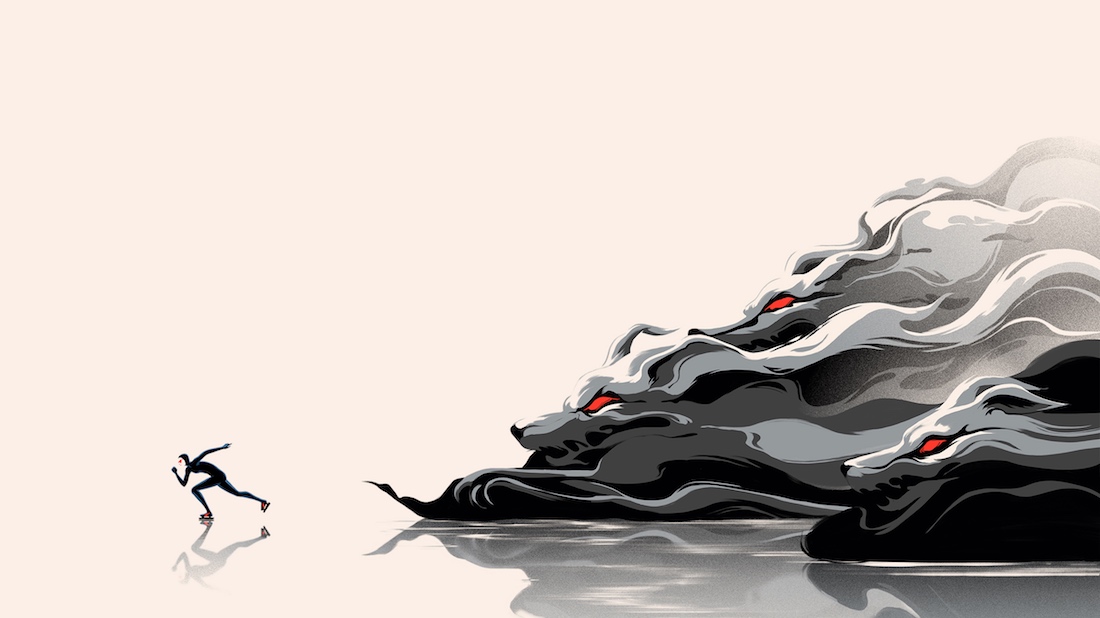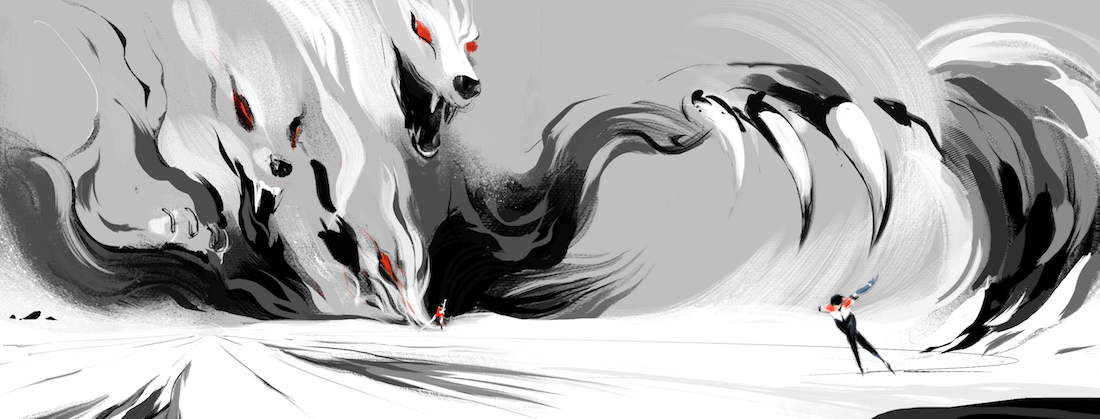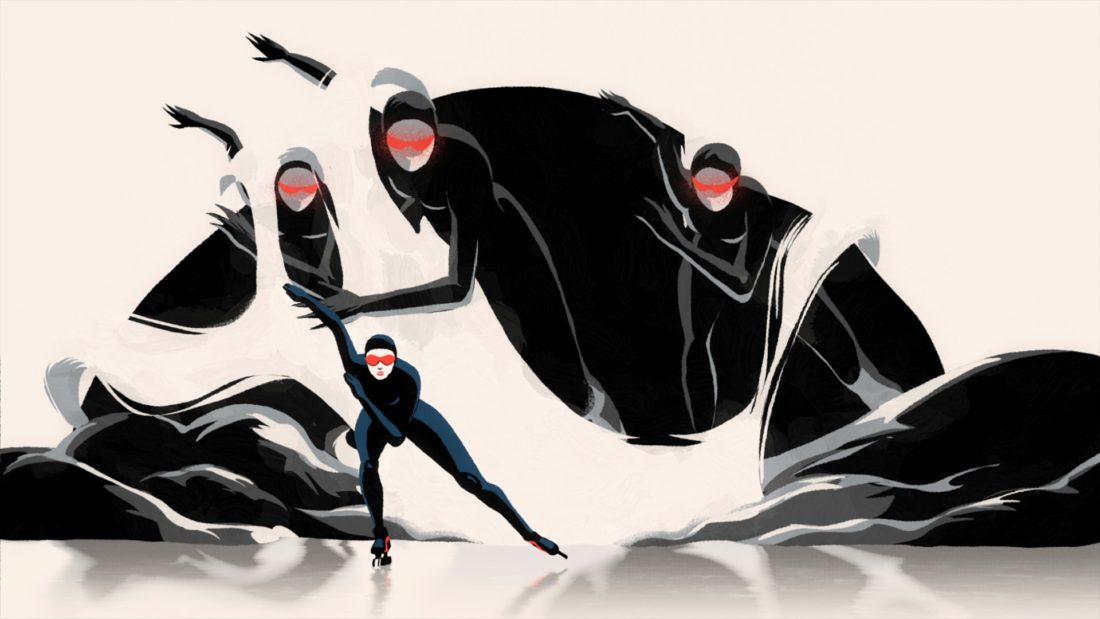Shots: Smith & Foulkes Reveal Fearless Approach to Winter Olympics Ad
“We go behind the scenes with the animation maestros on their new BBC Winter Olympics spot, from illustration styles evoking Korean folk art to storyboarding in VR.
Today saw the launch of the BBC Winter Olympics campaign, The Fearless Are Here – a 2D animated tour de force which brilliantly combines traditional Korean folk art with the white-knuckle pace and surging adrenaline of winter sports.
Animation maestros Smith & Foulkes directed the spot, and below they share their insights into the complicated craft process, from storyboarding in VR to achieving their vision of Ski Sunday… as directed by John Carpenter.

What was your first reaction to receiving the script?
There have been many memorable spots created over the years so the pressure was on from the start to bring something special to the party. It’s impossible to completely re-write the story of the Winter Olympics; there are after all only so many sports to choose from. For starters, skiers were always going to hurtle down mountains. We just tried to document the intense drama of these sports in the most visually different way.
There are many strong Oriental references through the colour palette and the recurring motifs of dragons and snakes – where did you look for inspiration?
You can’t completely ignore the geographical location of the event as it is so integral to the spirit and atmosphere of each individual Winter Olympic Games. But neither do you want to pack it full of Oriental travelogue clichés. So we had to find a happy balance to give it a contemporary creative connection to Korea.

But really this is a story about the personal fears of athletes performing at the highest level on the world stage, not a fear of Oriental symbols, and it would have been a bit repetitive to have them continually being chased down a mountain by some malevolent beast. So we had to introduce some more abstract fears that can play on a competitor’s mind, be it the mental fear of failure and anxiety or the more visceral fear of physical injury. These sports are not for the fainthearted, although horrific curling injuries are apparently quite uncommon.
Did you consider/play around with different animation styles at all?
We wanted the feel of a handcrafted illustration so we researched many visual techniques, particularly those that reflected both the traditional Korean folk art style and the wintry setting. There are so many examples of stunning illustration out there to give you inspiration but most are highly complex and would never work in animation. We wanted the complexity to come from the movement within the scene rather than have intricate background paintings that would draw the eye away from the dramatic action of each sport. So we decided to keep the settings highly abstract and eerily unexplained, using sudden changes of scale and perspective to give each scene a disorientating dreamlike quality. This seemed to amplify the element of fear.

There are lots of little details that only emerge on second or third viewing – was that intentional? What’s your favourite scene in the spot?
The most challenging scene to construct was undoubtedly the wolves chasing the speed skater [below]. It was all planned out but due to its complexity we never really knew whether it would work or not. So to see it finally coming together a few days before delivery was very satisfying.
We hear you used VR to create the storyboards – can you tell us a bit more about how this worked? Was it the first time you’d used VR as a production tool?
VR was used at the animatic and layout stage. Knowing that the spot is very dynamic we knew we wanted to have moving cameras to emphasis the action. This is something that can be tricky to make in 2D animation so we decided to to block the scenes and the camera movements with 3D sketches done in VR. It allowed us to quickly iterate and our shots and experiment with our angles and lenses. This was then fed to the 2D animators as a guide which helped them greatly to animate complicated shots more efficiently.
What was the most challenging aspect of the craft process?
This is a story about the very real fears that everyone can recognise. But we couldn’t go all-out horror. We had to walk a bit of a tightrope between our desire to show dramatic and occasionally disturbing images of fear and the BBC’s requirements to keep things within the realms of decent family viewing. We don’t want to be giving the nation nightmares. You could call that a compromise, but we’d prefer to think of it as if John Carpenter had directed Ski Sunday.
